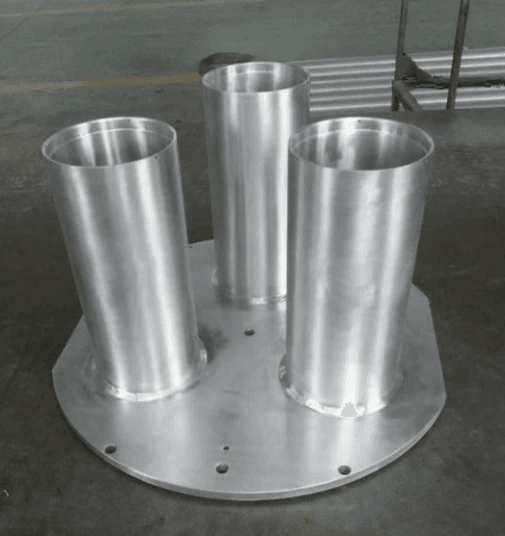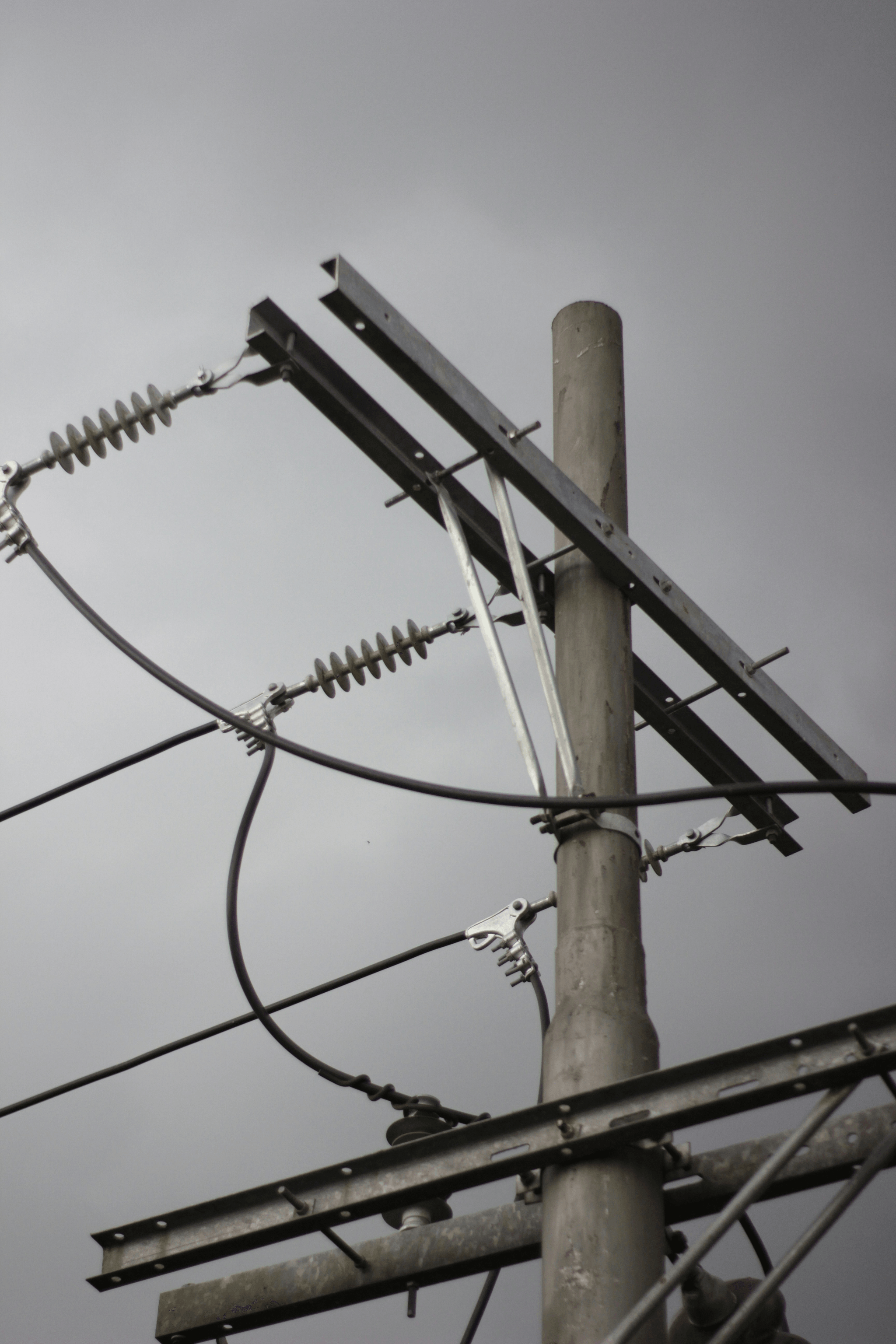Introduction
In the world of electrical engineering, understanding the various components of overhead lines is crucial for ensuring efficient power distribution. Among these components, grading rings play a vital role in managing electrical stress and maintaining system reliability. Furthermore, exploring the challenges associated with electrical insulation sheds light on why innovations like corona rings are essential to modern power systems.
Understanding Overhead Line Components
Overhead line components comprise an intricate network designed to deliver electricity safely and effectively. Key elements include conductors, insulators, and protective fittings such as grading rings that help manage voltage gradients. By grasping how these components work together, engineers can optimize performance and mitigate risks associated with electrical failures.
Exploring Electrical Insulation Challenges
Electrical insulation is critical for preventing short circuits and ensuring safe operation in high-voltage environments. However, various factors can compromise insulation integrity, leading to issues like corona discharge—a phenomenon that can degrade system efficiency over time. Addressing these challenges requires a comprehensive understanding of both grading rings and corona rings, which serve distinct yet complementary purposes in managing electrical stress.
Overview of Corona and Grading Rings
Corona rings are specifically designed to reduce the effects of electric fields around overhead line hardware by providing a smoother surface for electric discharge to occur safely. In contrast, grading rings are used primarily for voltage control along insulators or conductor terminations—essentially acting as a buffer against high-voltage spikes. Together, these two types of fittings play an integral role in enhancing the reliability and efficiency of power systems while addressing the ever-present challenge of corona loss.
Grading Rings Explained

Grading rings play a crucial role in managing electrical stress and enhancing the performance of overhead lines. They are specifically designed to improve the electrical field distribution around high-voltage conductors, reducing the likelihood of electrical discharges and maintaining system integrity. Understanding what grading rings are is essential for anyone involved in the design or maintenance of power systems.
What Are Grading Rings?
Grading rings are conductive components installed on overhead transmission lines, typically at points where high voltage is present. Their primary purpose is to create a more uniform electric field around conductors, thereby minimizing localized stress that can lead to insulation failure or corona discharge. By redistributing electrical stresses, grading rings help maintain a stable operating environment for both the infrastructure and connected equipment.
Functionality of Grading Rings
The functionality of grading rings revolves around their ability to mitigate voltage gradients that occur near transmission line terminations or dead ends. By providing a pathway for electric fields to disperse evenly, these rings help prevent excessive concentration of voltage at specific points which could otherwise lead to insulation breakdown and arcing. In essence, grading rings act as a shield against potential failures while enhancing overall system reliability.
Installation Considerations for Grading Rings
When installing grading rings, several factors must be considered to ensure optimal performance and longevity. Proper placement along with correct sizing relative to conductor dimensions is vital; if they are too small or poorly positioned, their effectiveness diminishes significantly. Additionally, attention should be paid to environmental conditions—factors like temperature fluctuations and exposure to contaminants can impact the durability of these components over time.
The Purpose of Corona Rings

These components serve a critical role in managing electrical discharges that can occur under high voltage conditions. By mitigating issues related to corona discharge, they help maintain system integrity while complementing other elements like grading rings.
Purpose of Corona Ring
The primary purpose of a corona ring is to reduce the electric field intensity at sharp edges or protrusions on electrical equipment, such as insulators and conductors. By doing so, it prevents premature breakdown of air surrounding these components, which could lead to unwanted corona discharges. Unlike grading rings that are designed for voltage distribution across a conductor's surface, corona rings specifically target localized high electric fields to ensure smooth operation.
How does Corona Rings Work?
Corona rings work by redistributing electric field lines around their surface, effectively lowering the peak electric field strength at critical points. This process minimizes the chances of ionization in the surrounding air, thus reducing the likelihood of corona discharge events. In essence, when installed correctly alongside grading rings, they create a protective barrier that enhances overall system performance.
Effects of Corona Discharge on Power Systems
The effects of corona discharge on power systems can be significant and multifaceted. Not only does it lead to energy losses—often referred to as the advantage of corona loss—but it can also create audible noise and radio interference that disrupts communication systems nearby. Moreover, prolonged exposure to these discharges can cause physical damage to insulation materials and other components over time; hence, utilizing both grading rings and corona rings becomes crucial for maintaining optimal power system functionality.
The Advantage of Corona Loss

When discussing the intricacies of electrical power systems, one cannot overlook the impact of corona loss. This phenomenon occurs when a portion of the electrical energy is lost due to ionization in the air surrounding conductors, leading to inefficiencies. However, understanding this advantage can help engineers optimize their designs and mitigate adverse effects, particularly when considering components like grading rings and corona rings.
Impact of Corona Loss on Efficiency
The impact of corona loss on efficiency is a double-edged sword; while it signifies energy dissipation, it also provides insights into system performance. High levels of corona discharge can lead to increased operational costs and reduced overall efficiency in power transmission systems. By examining how grading rings interact with these losses, engineers can devise strategies to enhance system reliability while minimizing inefficiencies.
Mitigating Effects of Corona Loss
Mitigating the effects of corona loss involves implementing various engineering solutions that often include grading rings and other protective devices. These components help manage electric fields around conductors, reducing the likelihood of ionization and subsequent energy loss. By strategically employing these solutions, power systems can achieve greater efficiency and longevity without sacrificing performance.
Comparing Costs of Grading and Corona Rings
When comparing costs between grading rings and corona rings, it's essential to consider both initial investments and long-term savings related to efficiency improvements. Grading rings may have a higher upfront cost but can significantly reduce corona losses over time, leading to lower operational expenses. Conversely, while corona rings serve their purpose effectively in preventing discharge events, they may not always offer the same return on investment as grading rings when evaluating overall system performance.
Selecting the Right Components

For instance, choosing between grading rings and corona rings is a critical decision that can impact both efficiency and maintenance costs. Understanding what each component does is essential for making an informed choice.
Choosing Between Grading Rings and Corona Rings
Grading rings are designed to mitigate electrical stress concentrations at conductor terminations, while corona rings serve a different purpose by reducing corona discharge effects. The question of whether to use grading rings or corona rings often hinges on specific application requirements and environmental conditions. If your system experiences high voltage levels or operates in areas prone to harsh weather, a grading ring might be your best bet.
On the flip side, if you're concerned about the purpose of corona ring technology—namely its role in managing electrical discharges—then incorporating corona rings could be beneficial. Each component has its unique advantages; thus, evaluating your system's needs will guide you toward the most suitable option. Ultimately, understanding how does corona rings work alongside what are grading rings will clarify which solution fits best.
Factors Influencing Ring Selection
Several factors influence the selection between grading rings and corona rings, including voltage levels, environmental conditions, and installation costs. For example, if you’re dealing with high-voltage lines in a humid area, you might prioritize corrosion resistance along with effective discharge management when making your choice. Additionally, maintenance considerations should not be overlooked; some systems may require more frequent inspections depending on whether they utilize grading or corona rings.
Another crucial aspect is the impact of the advantage of corona loss on overall efficiency within power systems. If minimizing energy loss is paramount for your operation's success, this factor should weigh heavily in your decision-making process as well. Moreover, consulting with experts or manufacturers can provide insights tailored to specific applications that help refine your choice further.
Role of Spark Fittings in Component Choice
Spark fittings play an essential role when deciding between grading and corona rings by ensuring proper installation and functionality of these components. They help minimize arcing at junctions where conductors meet other equipment or structures—an important consideration regardless of whether you opt for grading or corona technology. By facilitating secure connections and enhancing overall performance reliability, spark fittings become indispensable in both scenarios.
Moreover, many manufacturers offer custom solutions that incorporate spark fittings into their designs for either type of ring—this adaptability can significantly influence which option suits your needs best. It's also worth noting that proper installation standards must be adhered to ensure optimal performance from whichever component you choose; neglecting these guidelines could lead to premature failures down the line! Thus understanding how each element interacts within your system will ultimately lead to better choices regarding power transmission efficiency.
The Importance of Armor Rods

Armor Rod Material Selection
The selection of materials for armor rods is critical to their performance and lifespan. Typically made from high-strength aluminum or composite materials, these rods provide excellent protection against abrasion and impact. Choosing the right material not only enhances durability but also minimizes the risk of corona discharge, which can lead to energy loss—a phenomenon often referred to as the Advantage of corona loss.
Spark Fittings' Custom Armor Rod Solutions
Spark Fittings specializes in custom solutions tailored to meet specific project requirements for armor rods. With a variety of options available, including different sizes and materials, Spark Fittings ensures that each installation is optimized for its unique environment. Their expertise allows for seamless integration with existing systems while addressing challenges related to grading rings and other components.
Installation Standards for Armor Rods
Proper installation standards are vital when it comes to maximizing the effectiveness of armor rods in power systems. Following industry guidelines ensures that these components are securely attached, preventing potential damage from wind or ice loading. Additionally, adherence to installation protocols helps mitigate issues related to corona discharge by maintaining optimal spacing between conductors—key when considering both grading rings and corona rings.
Conclusion
In the world of electrical systems, understanding the nuances between grading rings and corona rings is pivotal for optimal performance. While both serve unique purposes, their differences can significantly influence system efficiency and reliability. By recognizing these distinctions, engineers can make informed decisions that enhance power system functionality.
Key Differences Between Grading and Corona Rings
Grading rings are designed primarily to manage electric field distributions around overhead line components, ensuring a more uniform voltage gradient. In contrast, the purpose of corona rings revolves around mitigating the effects of corona discharge, which can lead to energy loss and insulation degradation. By grasping what grading rings do versus how corona rings work, professionals can better assess when to implement each solution based on specific operational needs.
Enhancing Electrical Systems with Proper Selection
Selecting the right components for electrical systems is crucial for maximizing efficiency and minimizing losses—especially when considering the advantage of corona loss. The proper use of grading rings can help reduce stress on insulation materials by providing a smoother voltage profile, while effective implementation of corona rings can prevent harmful discharge phenomena from occurring. Ultimately, making educated choices regarding these components leads to enhanced reliability and longevity in power systems.
The Role of Spark Fittings in Power Systems
Spark fittings play an essential role in supporting both grading and corona rings within overhead lines by providing a reliable connection that minimizes potential failure points. These fittings ensure that both types of rings function optimally together while also addressing any issues related to insulation integrity or electrical discharge phenomena. With spark fittings at play, engineers can achieve a well-rounded approach to managing electrical systems effectively.

